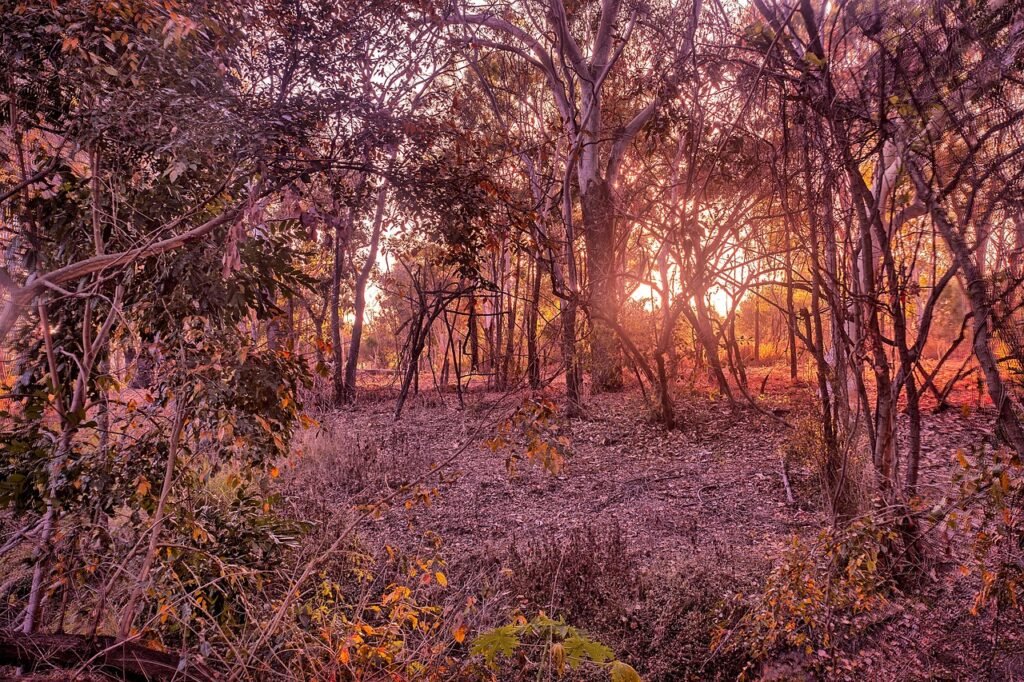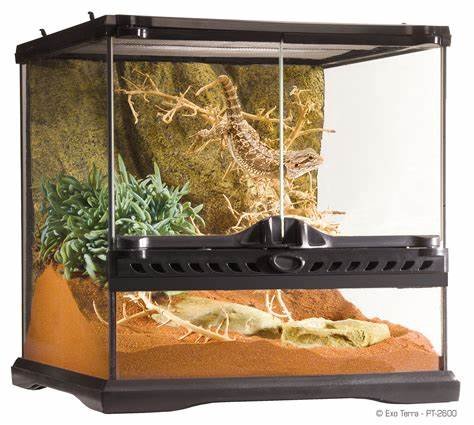Creating a naturalistic habitat for your reptile is crucial for their physical and mental well-being, as it replicates the conditions they would experience in the wild. This guide offers step-by-step guidance for Australian reptile owners looking to build enclosures that closely mimic their reptile’s natural environment, using sustainable materials and local flora to create a harmonious and eco-friendly habitat.
1. Research Your Reptile’s Natural Habitat

Before constructing an enclosure, it’s essential to understand the specific habitat your reptile species originates from. Australia is home to diverse environments, from the arid deserts where bearded dragons thrive to tropical rainforests inhabited by green tree pythons. Researching your reptile’s natural conditions will help you recreate a suitable enclosure with the right:
- Temperature: Reptiles are ectothermic, meaning they rely on external heat sources to regulate their body temperature. For example, desert species like the blue-tongue skink need warmer basking spots, while forest-dwelling reptiles may require more humidity and shade.
- Humidity: Tropical species require higher humidity levels compared to arid or temperate reptiles. Installing a misting system or fogger helps to replicate the moisture of a rainforest habitat. The Zoo Med Repti Fogger is an excellent product for maintaining humidity in tropical enclosures.
2. Choose Sustainable Materials for the Enclosure
Building a habitat with eco-friendly materials helps reduce the environmental impact of reptile care. Here are some sustainable options:
- Wood and Bamboo: These materials are ideal for constructing climbing structures, basking platforms, and hides. Bamboo, in particular, is fast-growing and renewable, making it an excellent choice for terrariums. The Exo Terra Bamboo Forest Terrarium is a popular option for owners seeking an eco-friendly, durable design.
- Recycled Plastic or Glass Enclosures: Opt for enclosures made from recycled materials to minimize waste. Glass is a durable, eco-friendly option for building larger tanks and provides an excellent view of your reptile. The Exo Terra Glass Terrarium is a solid choice for those who want visibility and durability.
- Natural Substrate: Use organic substrates like coconut coir, cypress mulch, or natural soil that break down naturally and are free from chemicals. For burrowing reptiles like the children’s python, a deep layer of natural soil allows them to exhibit natural behaviors.
3. Add Features That Mimic the Natural Terrain

To make your reptile’s enclosure truly naturalistic, the layout should resemble the landscape of their native environment:
- Rocks and Driftwood: Incorporate large rocks and driftwood, both of which are easily sourced locally. These can be used to create basking spots and climbing areas for species like bearded dragons or carpet pythons. Products like Zoo Med’s Mopani Wood are durable and reptile-safe.
- Climbing Branches: Arboreal reptiles, such as green tree pythons and water dragons, need vertical space to climb. Use natural branches, collected from your area, as climbing structures, ensuring they’re pesticide-free and thoroughly cleaned.
- Hideaways and Shelters: Create hideouts for your reptiles to retreat to, using hollow logs, caves made from natural stone, or cork bark. These provide your reptile with a sense of security and allow them to replicate their natural behavior.
4. Integrate Local Flora
Incorporating native Australian plants into your reptile’s habitat can enhance the natural feel of the enclosure while providing environmental enrichment:
- Drought-Resistant Plants: For arid setups, native Australian succulents like pigface or rock ferns are ideal for desert-dwelling species. These plants are adapted to low water conditions and add texture to the habitat.
- Tropical Plants for Humid Terrariums: For species requiring more moisture, such as blue-tongue skinks, use tropical plants like broad-leaved palms or native ferns. Ensure that any plants added are non-toxic to reptiles and can withstand the conditions of the enclosure.
- Potted vs. Planted: Consider planting flora in pots to allow for easier removal and maintenance. Potted plants also prevent reptiles from uprooting them.
5. Sustainable Heating and Lighting Solutions

Reptiles rely on proper heating and lighting for digestion, metabolism, and overall health. Here are eco-friendly options:
- LED Lighting: LED lights use significantly less energy than traditional bulbs, making them a sustainable choice. For UVB, the Arcadia ProT5 UVB Kit provides energy-efficient lighting with the proper spectrum while consuming less power.
- Solar Power: In areas with plenty of sunlight, installing solar panels to power heat lamps and basking areas is an excellent way to reduce electricity costs while maintaining the necessary heat for your reptile’s enclosure.
6. Maintain Proper Ventilation
Good airflow is crucial for preventing mold and maintaining the proper humidity levels in a reptile’s habitat:
- Mesh Tops: For species that require ventilation, like blue-tongue skinks, use enclosures with mesh tops or side vents. This ensures that air circulates, preventing the buildup of bacteria or excess moisture.
- Natural Ventilation Systems: For outdoor enclosures, use natural ventilation by designing the space to allow airflow while still providing protection from predators.
7. Keep It Eco-Friendly with Water Management

Water is essential for your reptile’s hydration and humidity needs, but it can be managed sustainably:
- Rainwater Collection: Use rainwater for misting systems in tropical enclosures or filling water bowls. Rainwater is free of chemicals like chlorine, making it a better alternative to tap water.
- Recycling Water: If you’re replacing water daily, consider using the old water to irrigate plants around your home or in the reptile enclosure itself.
8. Enclosure Maintenance and Cleaning
A clean enclosure is essential for your reptile’s health, but traditional cleaning products often contain harsh chemicals. Opt for natural cleaning solutions:
- Vinegar and Water: Use a mixture of vinegar and water to clean glass enclosures and other surfaces. This solution is safe for reptiles and environmentally friendly.
- Biodegradable Waste Bags: For removing old substrate or cleaning up waste, use biodegradable waste bags to minimize the impact on landfills.
9. Bioactive Elements for a Self-Sustaining Habitat

Consider incorporating bioactive elements into the enclosure:
- Microfauna: Introduce cleanup crews like isopods and springtails to help break down waste and keep the environment clean naturally. These invertebrates thrive in bioactive setups, making maintenance easier and more eco-friendly.
- Live Plants and Natural Cycles: Use live plants that help absorb waste and maintain humidity. A bioactive system can reduce the need for frequent cleaning, as the natural ecosystem handles much of the upkeep.
10. Australian Legal and Ethical Considerations
When creating a naturalistic habitat for your reptile, it’s important to be aware of Australia’s wildlife regulations. Many native reptiles, such as the central bearded dragon or blue-tongue skink, require permits to keep legally. Ensure you have the appropriate licenses for owning native species. Additionally, sourcing reptiles from ethical breeders that prioritize conservation and sustainable practices helps protect Australia’s biodiversity. Avoid purchasing reptiles taken from the wild, as this can negatively impact natural populations.
Conclusion
Creating a naturalistic habitat for your reptile is an enriching experience for both the pet and the owner. By using sustainable materials, local flora, and eco-friendly solutions, you can build a habitat that mimics the natural environment of your reptile while also being mindful of the environment. This approach ensures a happy, healthy reptile while contributing to a greener planet.
